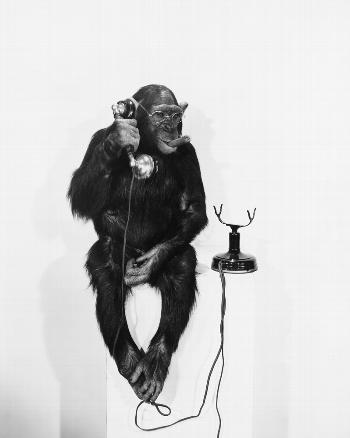The art and science of improving performance (monkey see, monkey do!)
Add bookmarkTo improve productivity in organizations you need only get leaders out in the field
The controversial Koch brothers wrote a book called the Science of Success (2007). I don't recommend you read it as it’s one of those books that successful people write where they think they were successful because of these management techniques, whereas it’s more likely that because they were successful they could try out these management techniques (fads of the day?).
But in the book there is one pithy anecdote that gave me my one per cent. Smitten with control charts and their promise to magically improve productivity, an edict was issued that each team should have charts and they should be kept up-to-date. Here’s the quote from the book:
"The electricians there were spending a large portion of their time measuring activity and drawing charts instead of doing electrical work. Our people referred to this as "charts for Charles." Many employees thought I wanted charts or descriptions of activity as an end in itself, rather than a means to improve results. Unfortunately, measurement and chart-drawing became the focus rather than improving performance and eliminating waste." (p. 39)
It’s a great quote (like said, forget the rest of the book) because it encapsulates the common fascination management have with dashboards, MIS, and in this case, charts. As if they could sit back in a plush office with flashing screens all around them barking orders like they the captain on the Star Ship Enterprise. Except that while these charts are being updated, oil is leaking all over the floor and customer calls are going unanswered.
The intention of visual management and self-directed teams is perhaps admirable. But if this doesn't actually improve productivity then what does?
If the goal is to create autonomous teams that act in the best interest of the organization and customer then focus on the quality of leadership.
The value of management
Charts for Charles suggests that the value of middle managers is underestimated. Consider this study by Wharton University researcher Ethan Mollick, who asked IT project managers how much value managers drove. The results were startling.
"After controlling for many factors, such as the genre of the game and the size of the project, I found that individual producers account for 22.3% of the variation in company revenue. Designers, by contrast, account for just 7.4% of the variation — a relatively marginal impact. For comparison, everything else that’s part of the firm, whether it’s senior managers or strategy or marketing, accounts for just 21.3% of the variation in firm performance."
This same effect can also be seen in research by Capgemini Consulting and the IESE business school annual Global Innovation Leadership Study. Based on a survey of 260 innovation executives around the world, they concluded that, "large organizations create so much distance between the executives and those that are tasked to innovate that a disconnect exists between them."
People behave in the context of how they perceive reality. What I mean by this is that how people act is influenced by what others do (reciprocity of values) how what is communicated to them (written values) and how their leadership behaves.
As the aphorism goes, "people don't believe what they read on the walls, but what they see in the halls". And perhaps the most influential is their boss.
It follows then, that one of the best ways managers can influence productivity and performance is to get out into the field and demonstrate the values and behavior they wish to see.
One of my jobs through university was a concierge and porter in a five star hotel. I just loved this job and while I had enthusiasm and perhaps a little charm, when I first started I needed to be taught five star service, such as referring not to ‘customers’ but ‘guests’ and addressing everyone as either sir or madam (and, if their name was known, Mister and Misses).
You get the point.
But our front office manger wanted us to be responsive not just polite. And to demonstrate his point he came out onto the driveway and served a guest wanting his car. He confirmed identity and room number, all politely enough, and then demonstrated what responsiveness meant: he literally ran across the car park and brought the car around.
I’d never seen that before. This was a coaching moment that words could not have adequately described; this is how to be responsive. It sets the tone for all other activities from opening doors to polishing the trolleys.
Managers often wonder how to decentralize decision-making, how to empower their staff, and in turn how to increase their performance. There are tools and best practices, but sometimes it comes down to the manager getting out in the field and showing them what the mean when they say "responsiveness."
[eventPDF]





















